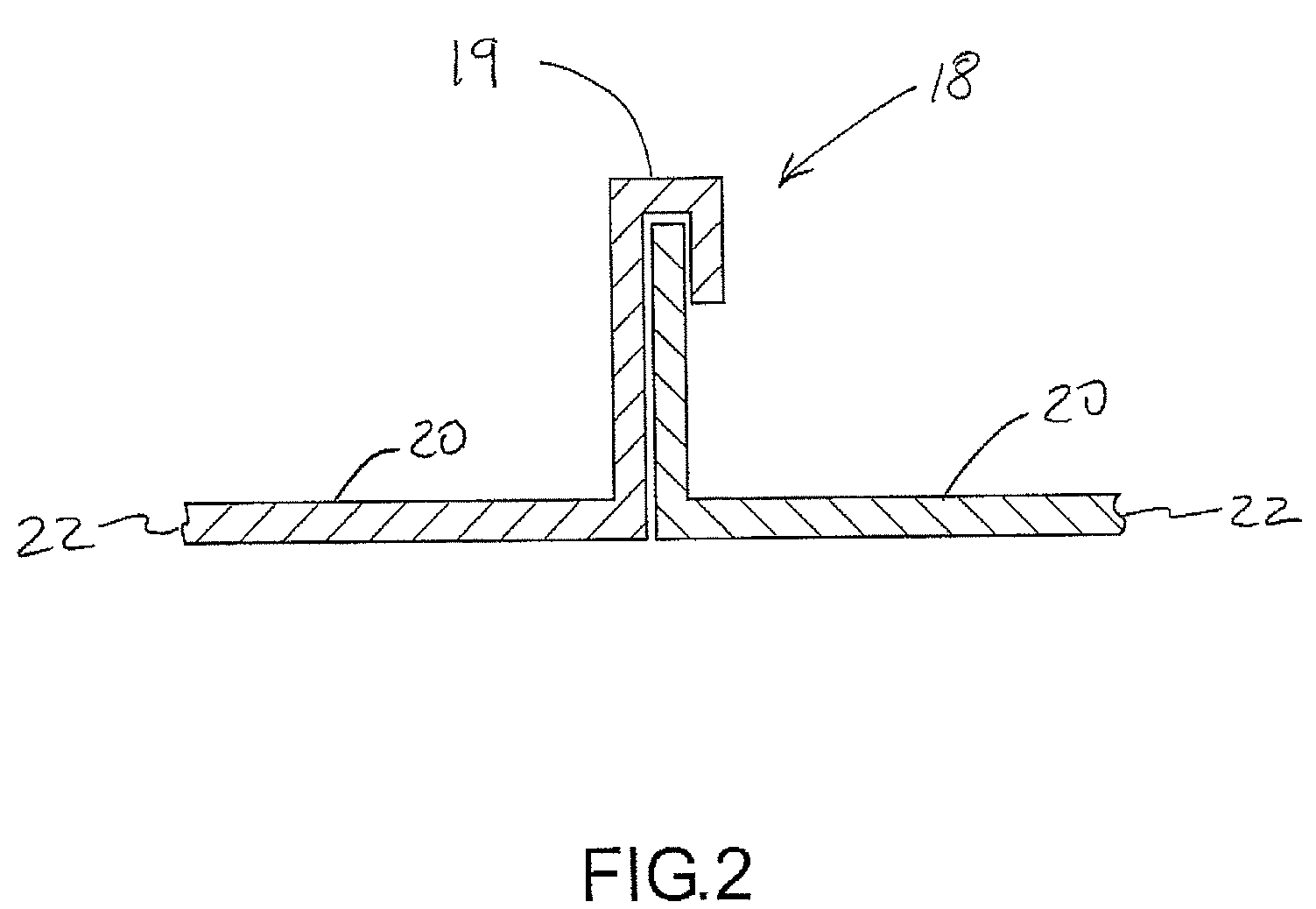Crowning panel assembly
a technology of crown molding and crown molding, which is applied in the direction of roofs, constructions, building components, etc., can solve the problems of visual distraction, inability to meet the needs of construction, and the cost of standing seam panels compared to other metal panels, so as to reduce the visual impact
- Summary
- Abstract
- Description
- Claims
- Application Information
AI Technical Summary
Benefits of technology
Problems solved by technology
Method used
Image
Examples
Embodiment Construction
[0042]FIG. 1 illustrates a representative roof 12 of a building. The roof 12 may be of any pitch, but at least generally slopes downwardly from a peak 14 of the roof 12 to an eave 16 of the roof 12. Multiple panels 22 (e.g., metal) are interconnected to define the roof 12. The interconnection of adjacent panels 22 defines a standing seam 18. The length dimension of each standing seam 18 extends from the peak 14 of the roof 12 to the eave 16 of the roof 12, and furthermore the elevation of the various standing seams 18 progressively changes proceeding along their respective length dimensions. Each panel 22 includes a flat, planar base 20 that is disposed between each adjacent pair of standing seams 18. The standing seams 18 may be further characterized as extending at least generally away from the bases 20 that are disposed on each side of the relevant standing seam 18 (FIG. 2, where an upper end 19 of the standing seam 18 is vertically spaced from the adjacent bases 20 of the panels...
PUM
 Login to View More
Login to View More Abstract
Description
Claims
Application Information
 Login to View More
Login to View More - R&D
- Intellectual Property
- Life Sciences
- Materials
- Tech Scout
- Unparalleled Data Quality
- Higher Quality Content
- 60% Fewer Hallucinations
Browse by: Latest US Patents, China's latest patents, Technical Efficacy Thesaurus, Application Domain, Technology Topic, Popular Technical Reports.
© 2025 PatSnap. All rights reserved.Legal|Privacy policy|Modern Slavery Act Transparency Statement|Sitemap|About US| Contact US: help@patsnap.com



